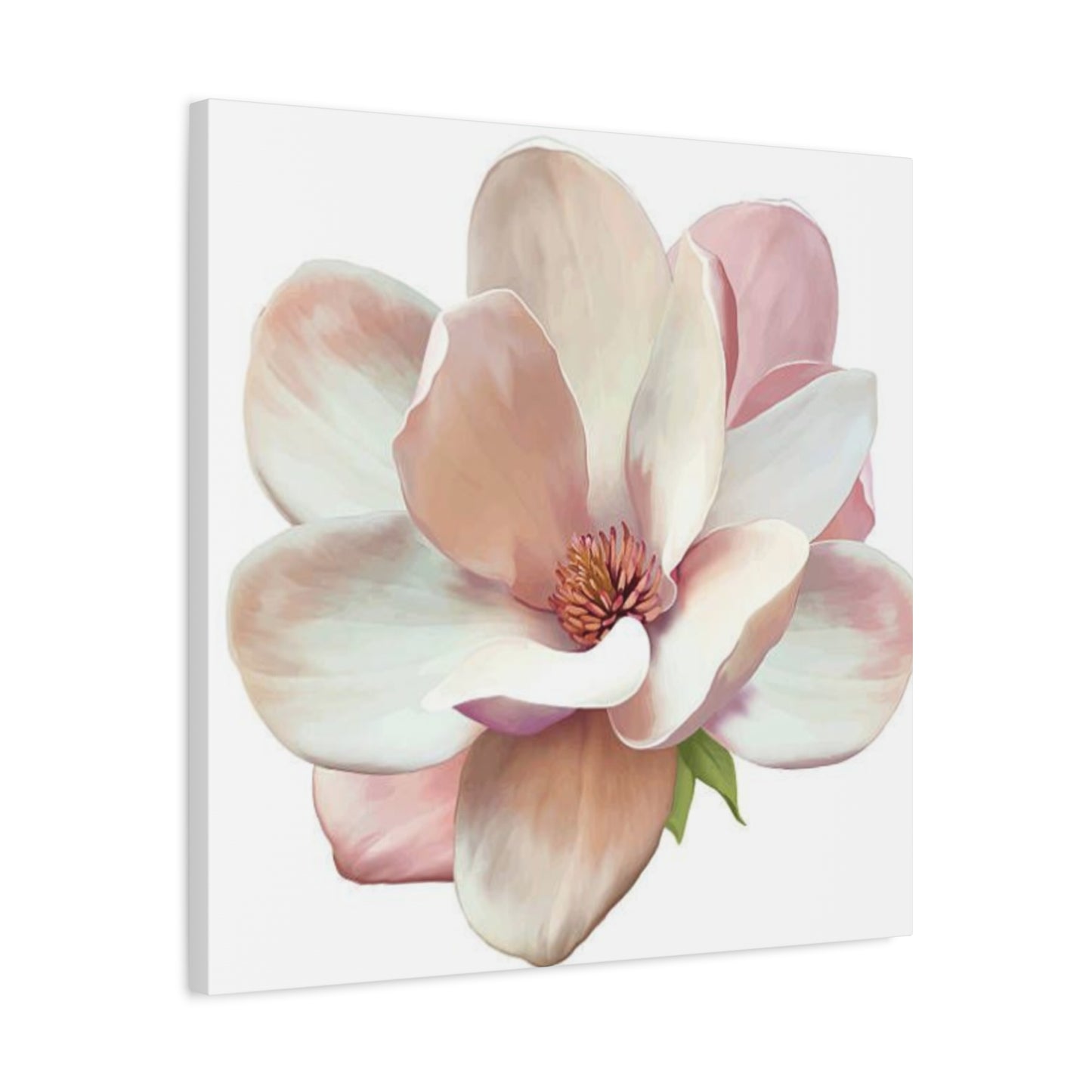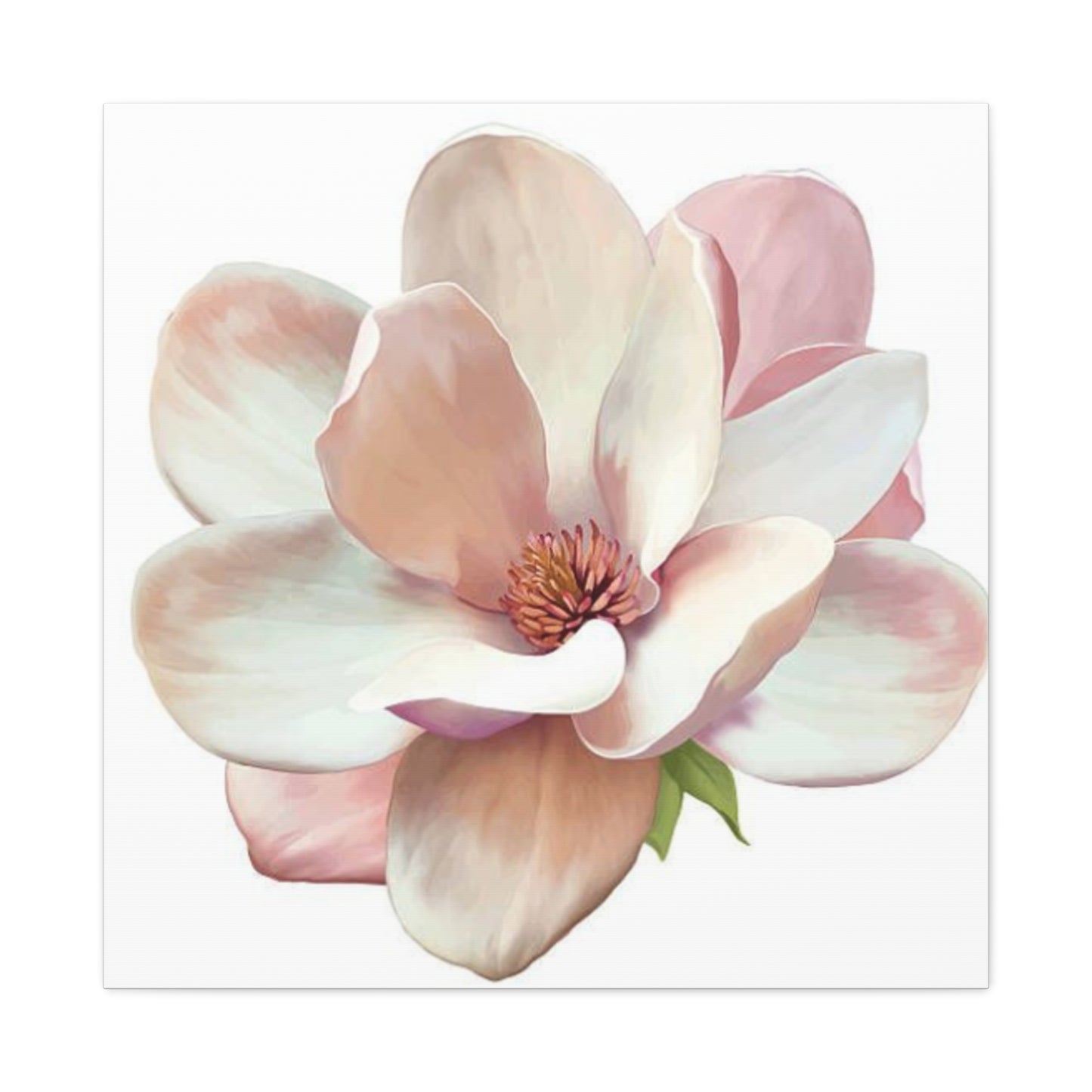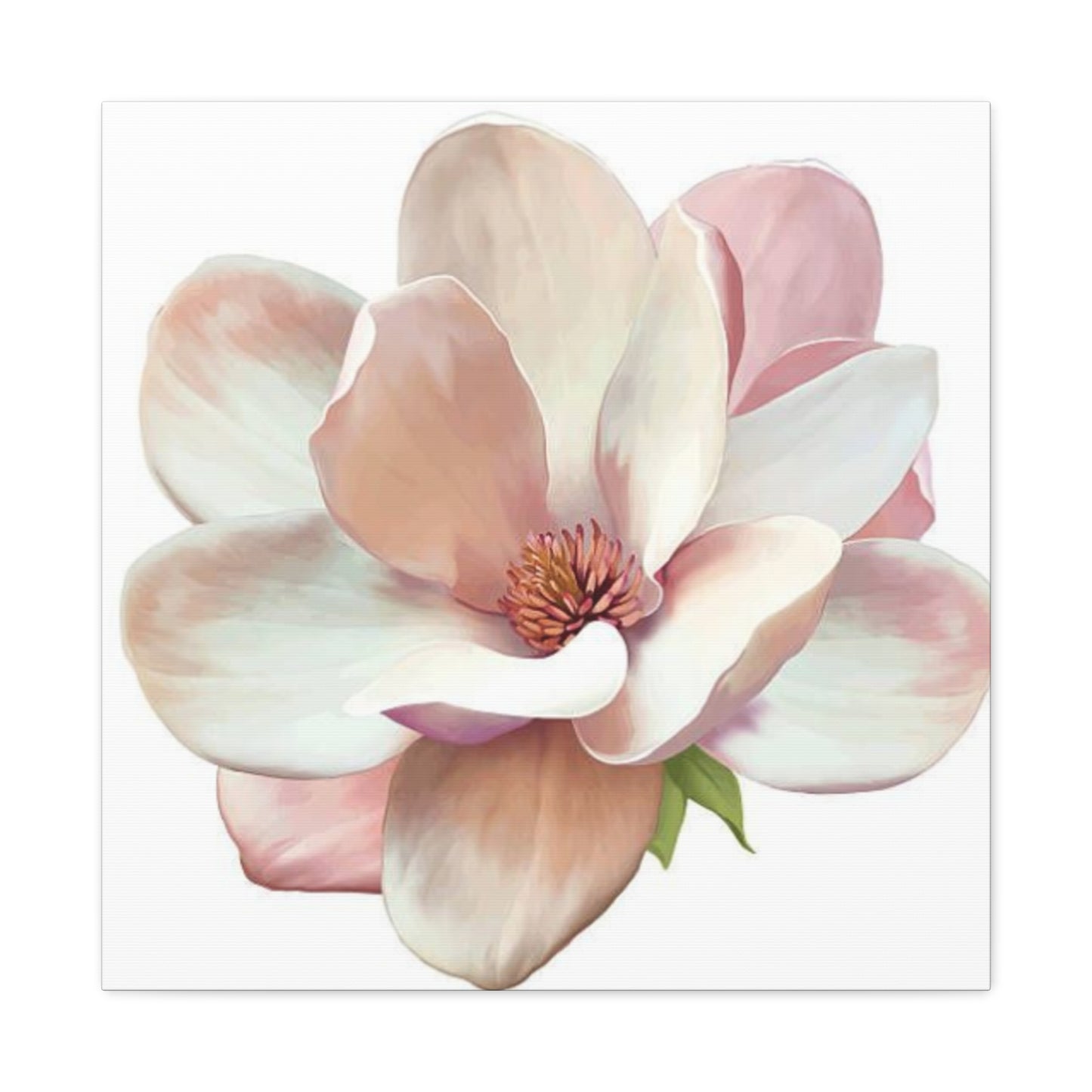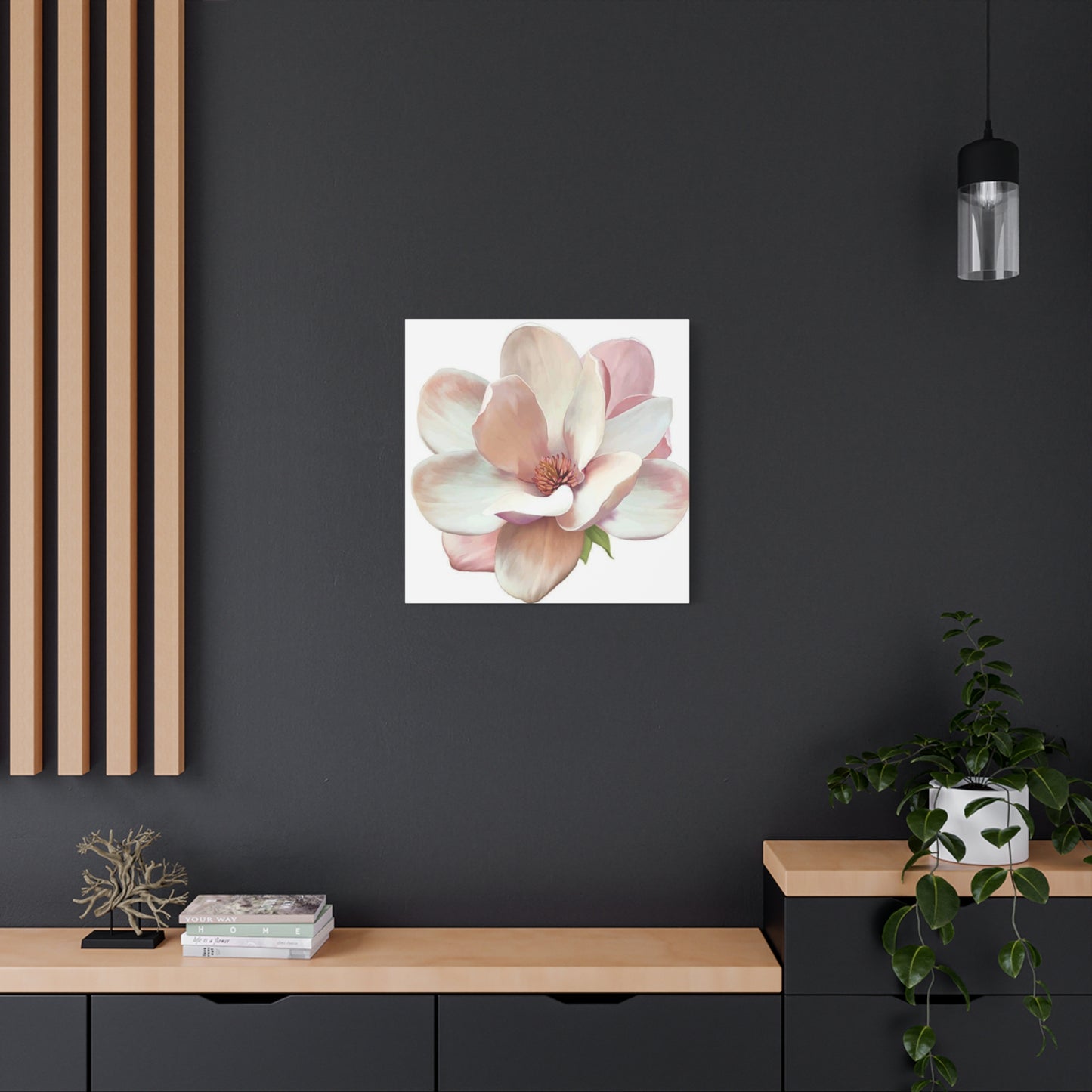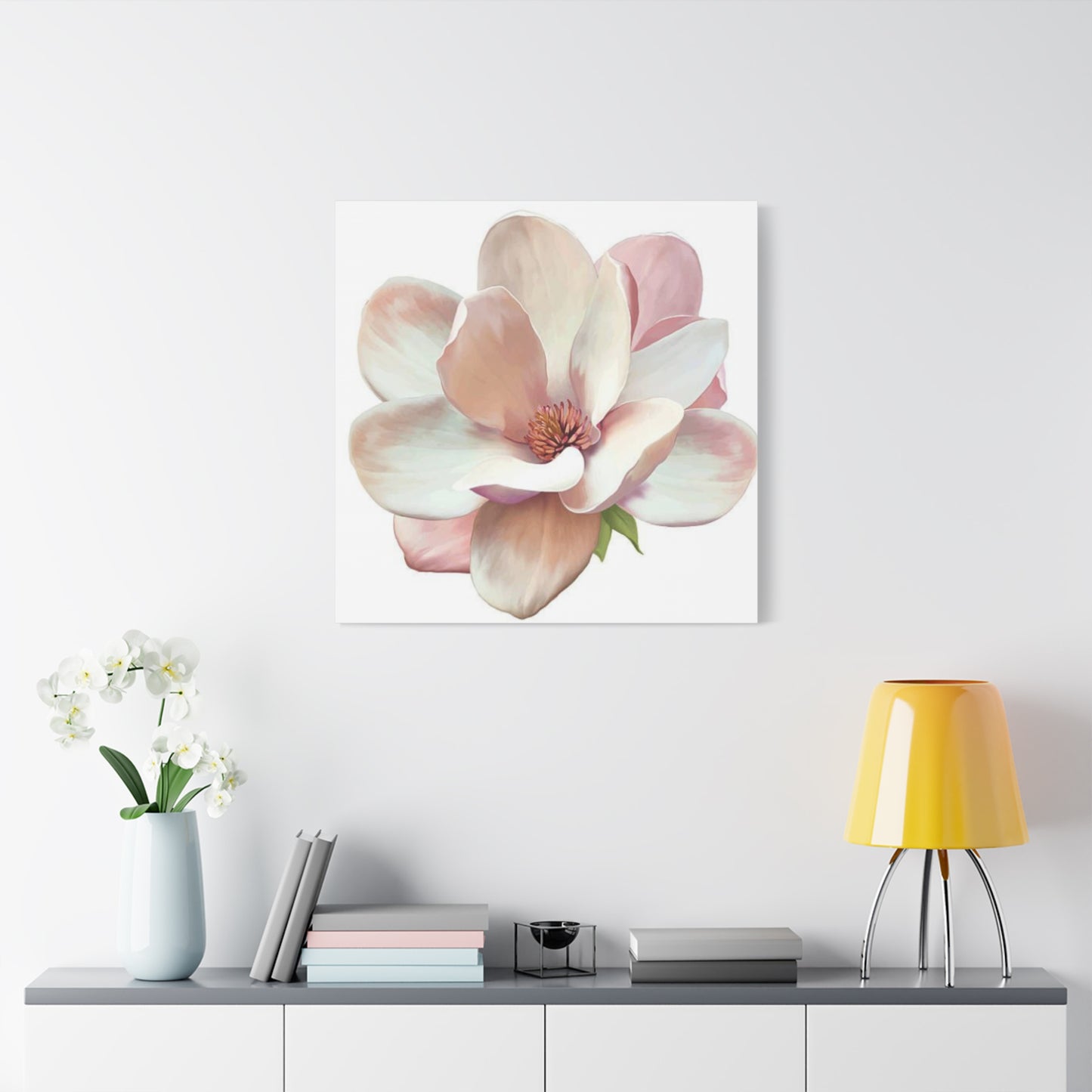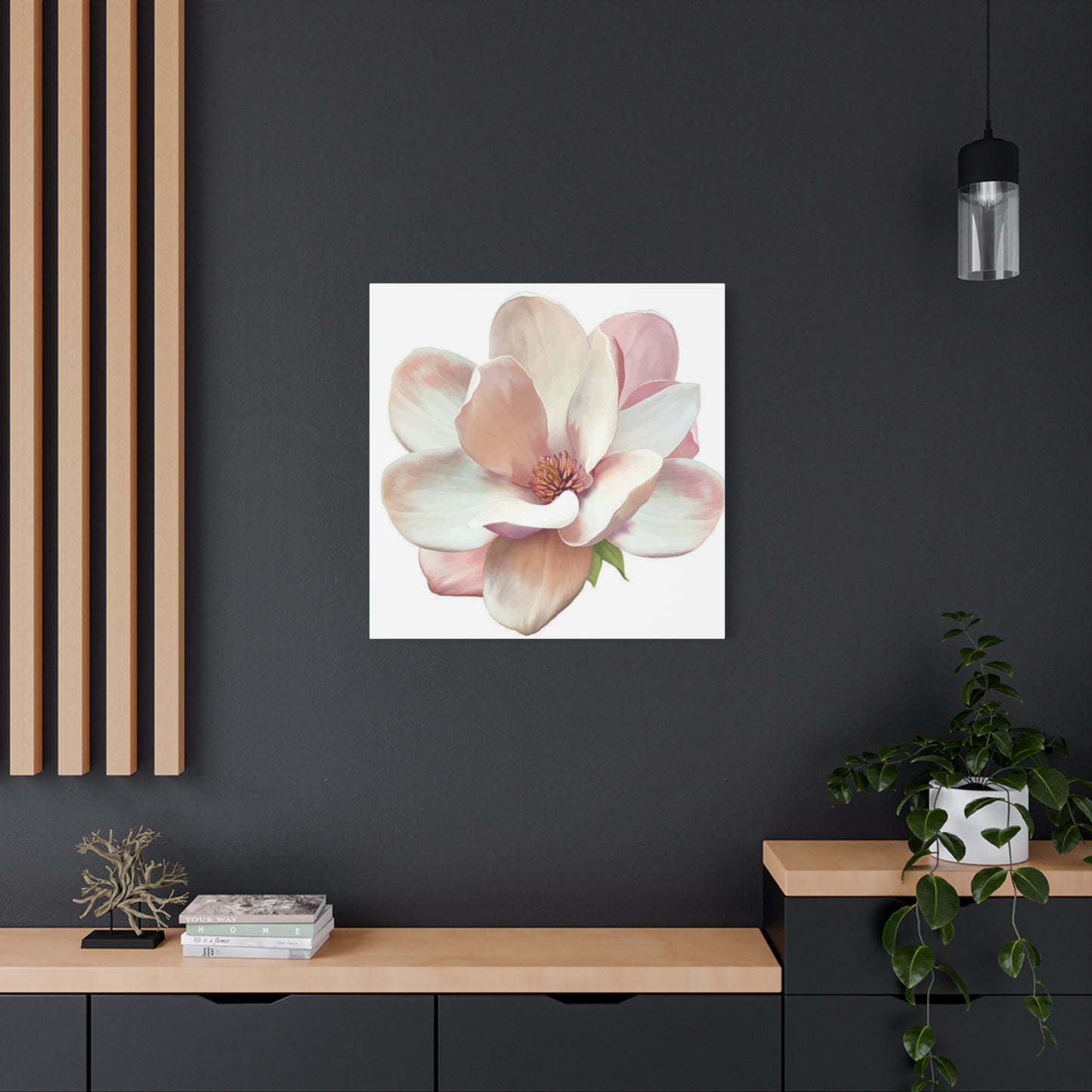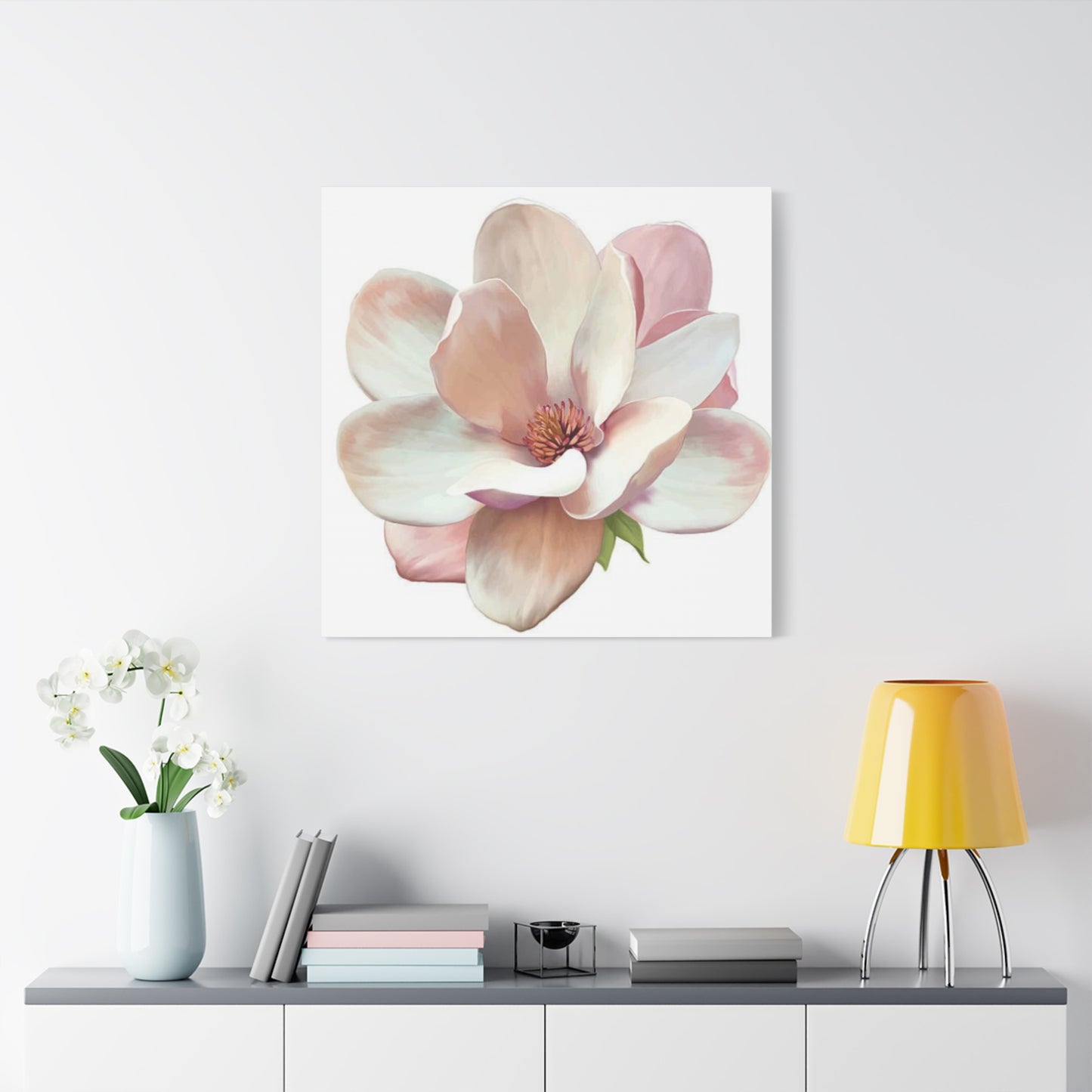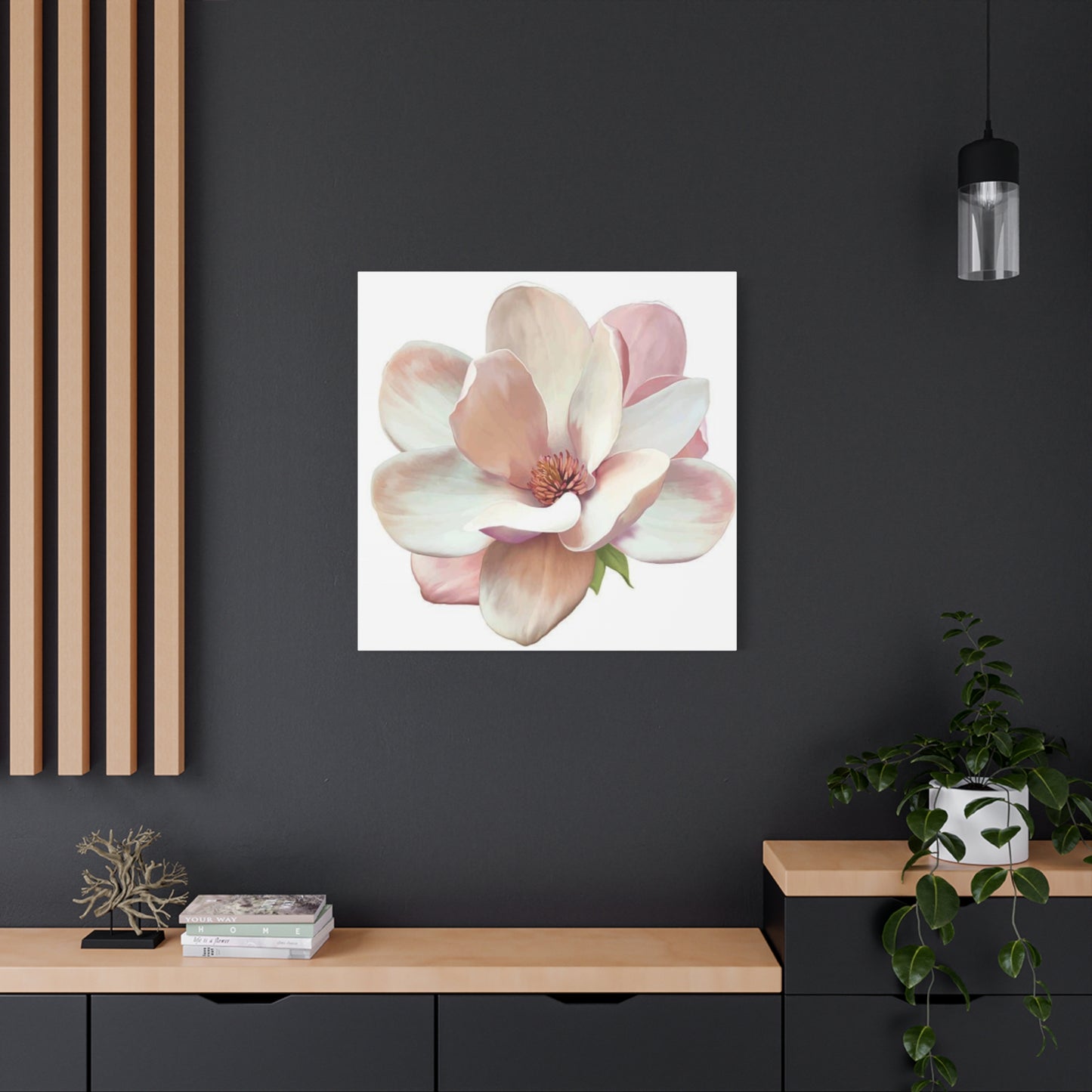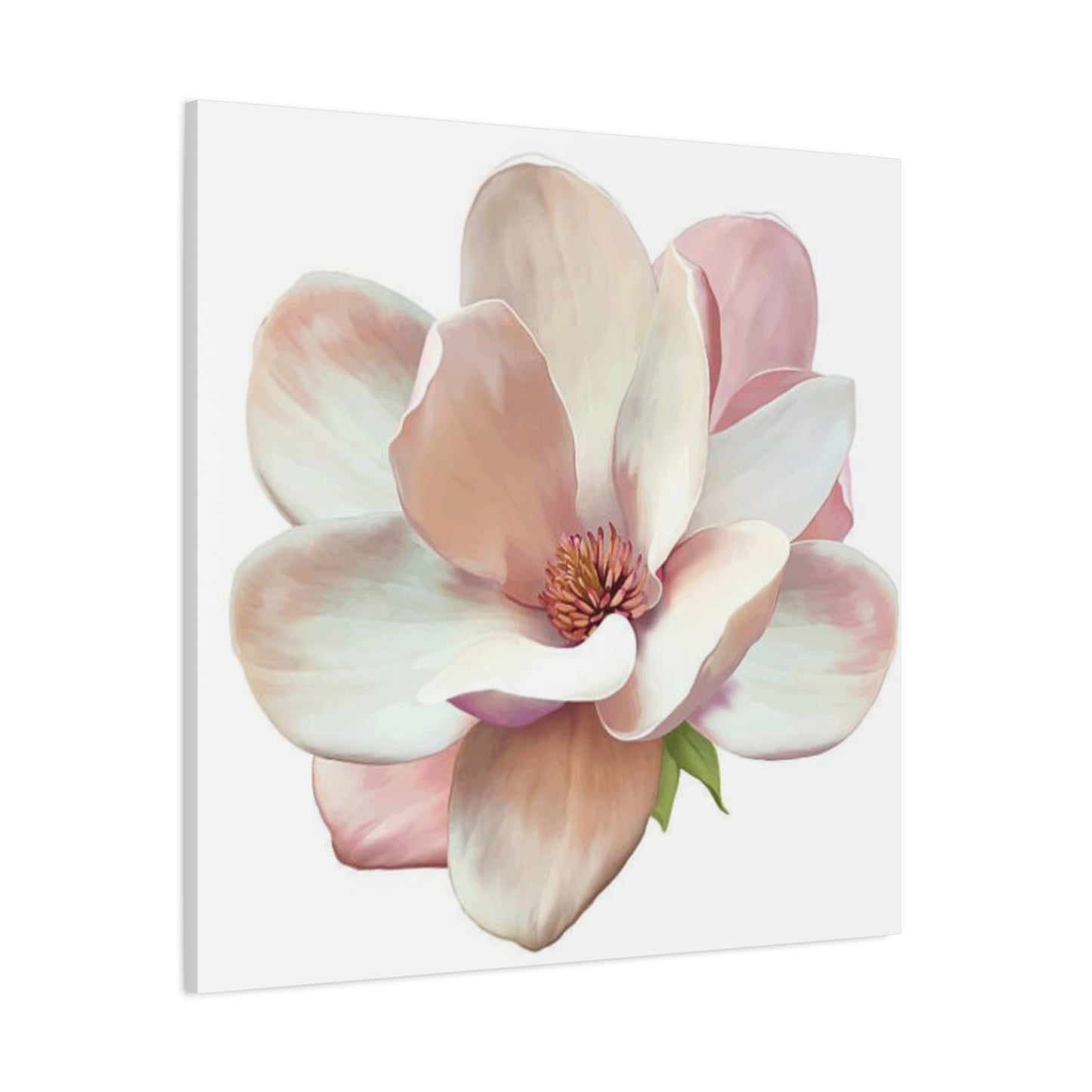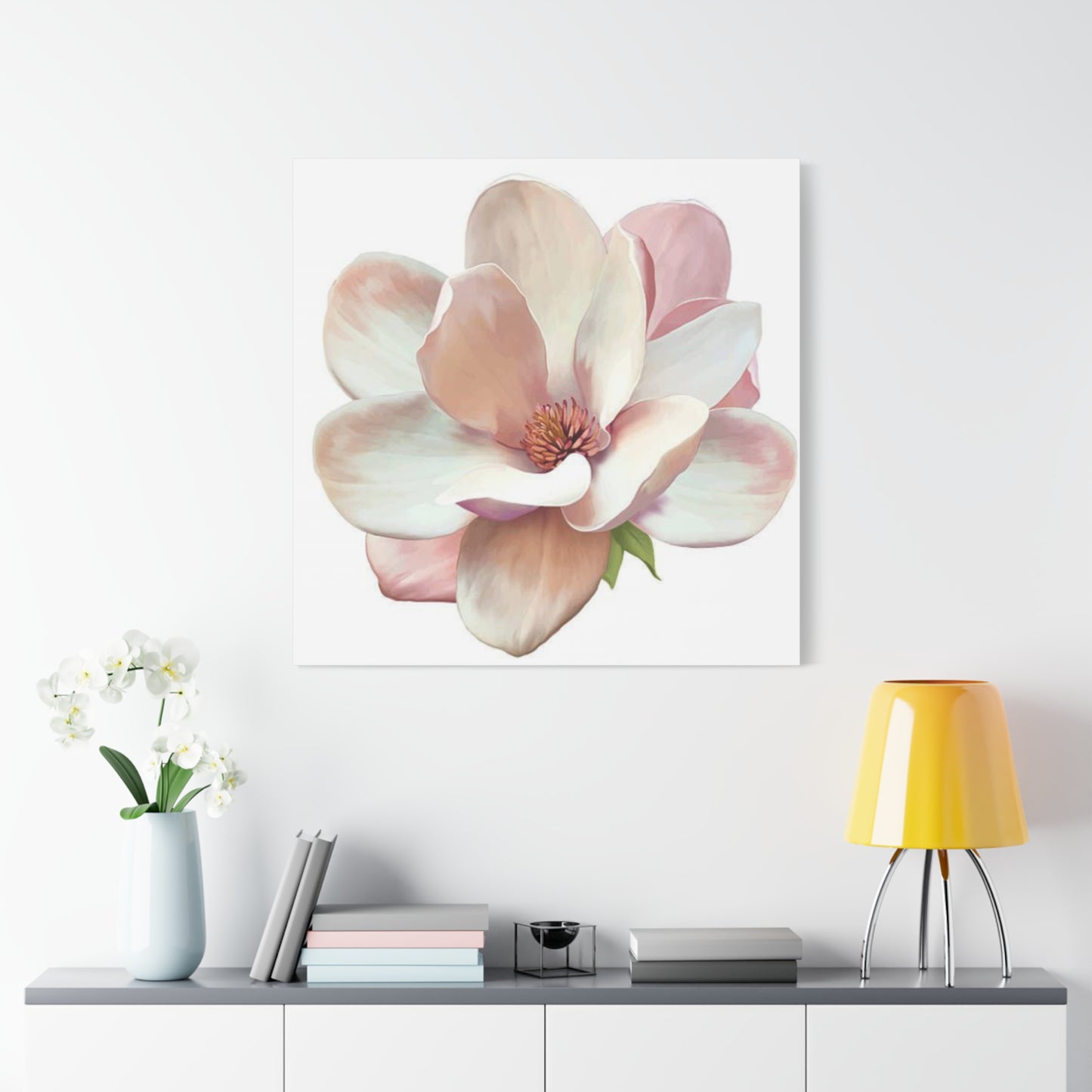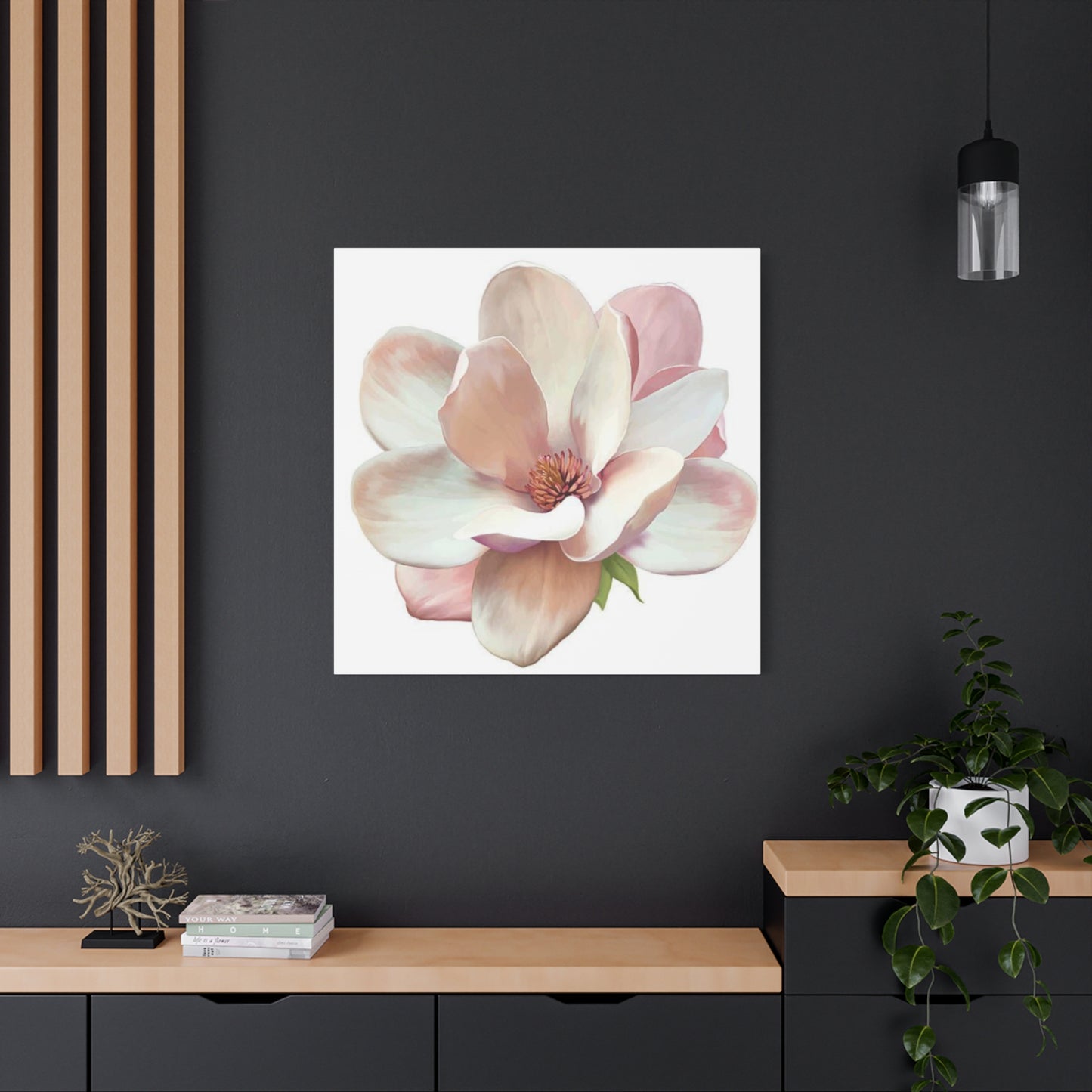Pink Magnolia Flower Wall Art: Transform Your Living Spaces with Timeless Floral Elegance
Creating a home environment that reflects tranquility, sophistication, and natural beauty has become increasingly important in our fast-paced modern world. Among the countless decorative options available, floral artwork featuring delicate blossoms stands out as a timeless choice that brings warmth and serenity to any interior setting. The magnolia, with its soft petals and graceful presence, represents one of nature's most captivating flowering specimens. When captured in artistic form and displayed on walls, these blooms offer an enduring visual celebration that transcends seasonal limitations and design trends. This comprehensive exploration delves into the multifaceted appeal of incorporating magnolia imagery into residential and commercial spaces, examining the aesthetic, psychological, and practical dimensions that make this decorative choice both meaningful and versatile.
The appeal of botanical imagery in home decoration extends far beyond simple aesthetics. Throughout human history, people have sought to maintain connections with the natural world, even within built environments. Floral representations serve as bridges between indoor comfort and outdoor vitality, creating visual reminders of growth, renewal, and organic beauty. The magnolia blossom, distinguished by its substantial yet delicate petals and subtle color variations, provides particularly compelling subject matter for artistic interpretation. Its architectural form combines strength with softness, making it adaptable to various design philosophies from traditional to contemporary. Understanding the unique qualities that make magnolia artwork especially effective in creating peaceful, welcoming spaces requires examination of botanical characteristics, color psychology, design principles, and practical decorating considerations.
Pink Magnolia Wall Art for Peaceful Spaces
Establishing tranquil environments within our homes serves essential functions for mental health and overall wellbeing. The visual elements we surround ourselves with significantly influence our psychological states, affecting stress levels, mood regulation, and cognitive function. Floral imagery depicting magnolia blossoms in gentle tones creates immediate associations with natural settings, triggering relaxation responses that help counterbalance the stimulation of daily life. The inherent qualities of magnolia flowers contribute to their effectiveness in promoting calm atmospheres through their organic forms, balanced compositions, and soothing color palettes.
The magnolia's physical characteristics naturally lend themselves to peaceful visual experiences. Unlike more aggressive or complex flower structures, the magnolia presents a simplified elegance with broad, smooth petals arranged in symmetrical patterns. This geometric harmony appeals to our innate preference for balanced forms, creating visual comfort rather than tension. When artists capture these blossoms, the resulting images carry this inherent peacefulness, offering viewers a moment of respite from visual chaos. The negative space surrounding the flower becomes as important as the bloom itself, allowing the eye to rest and the mind to quiet.
Color psychology plays a fundamental role in how magnolia artwork influences room atmospheres. Soft tones associated with these flowers fall within the warmer end of cool color spectrums, creating inviting rather than cold impressions. These hues naturally reduce psychological arousal, slowing heart rates and promoting deeper breathing patterns. Research in environmental psychology consistently demonstrates that exposure to nature imagery, particularly florals in calming colors, reduces cortisol levels and increases feelings of contentment. Incorporating such visual elements into living spaces essentially brings therapeutic benefits into daily environments.
The scale and presentation of magnolia imagery also contribute to its calming effects. Oversized depictions that allow viewers to appreciate petal textures and subtle color gradations encourage meditative observation, while smaller pieces create gentle focal points that don't overwhelm spaces. The choice between single bloom compositions and branch arrangements affects the energy of artwork, with isolated flowers promoting contemplation and grouped blossoms suggesting abundance without busyness. Understanding these nuances allows for intentional selection that supports specific atmospheric goals.
Placement strategies maximize the peaceful impact of magnolia artwork throughout homes. Bedrooms benefit particularly from these calming visuals, as the last images we see before sleep and first upon waking influence our mental states. Positioning such artwork opposite beds creates gentle focal points that support relaxation rituals. Living areas designated for quiet activities like reading or conversation also gain from the serene presence of floral imagery. Even high-activity spaces like kitchens can benefit from strategic placement of calming artwork, providing visual anchors that help regulate household energy.
The relationship between magnolia artwork and other design elements determines overall effectiveness in creating peaceful environments. Complementary color schemes that echo the gentle tones in the flowers throughout textiles, paint selections, and accessories create cohesive spaces that feel intentionally designed. Natural materials like wood, linen, and stone harmonize with floral imagery, reinforcing connections to the organic world. Avoiding excessive pattern mixing and maintaining relative simplicity in surrounding decor allows the artwork to function as intended without competing for attention.
Lighting considerations prove crucial in how magnolia artwork contributes to room atmospheres. Natural light enhances the dimensional qualities of quality prints and original paintings, revealing subtle color variations and textural details. Artificial lighting should be carefully considered, with warm-toned bulbs supporting the inviting nature of the artwork rather than creating harsh contrasts. Dimmer switches offer flexibility, allowing adjustment of lighting levels to support different activities and times of day while maintaining the artwork's calming presence.
The psychological benefits of incorporating nature imagery extend beyond immediate relaxation responses. Regular exposure to botanical visuals helps maintain our biophilic connections, satisfying deep-seated needs for contact with living systems. This ongoing relationship with nature representations supports sustained improvements in mood, creativity, and cognitive function. Magnolia artwork becomes not just decoration but an investment in daily wellbeing, quietly working to enhance quality of life through consistent visual nourishment.
Seasonal considerations in selecting magnolia artwork allow for year-round appreciation of spring freshness. While actual magnolia trees bloom briefly each year, artistic representations maintain perpetual vitality, offering constant reminders of renewal and growth. This consistency provides psychological comfort, particularly during darker winter months when connections to flourishing nature feel more distant. The artwork becomes a visual promise of returning warmth and life, supporting optimism and forward-looking perspectives.
Personal responses to magnolia imagery vary based on individual experiences and associations. Those with positive memories of magnolia trees from childhood homes or significant locations may experience particularly strong emotional connections to such artwork. These personal dimensions add layers of meaning beyond universal aesthetic appeal, transforming decorative choices into deeply personal expressions. Understanding one's own responses to different floral subjects allows for more intuitive, satisfying selection processes that result in artwork that truly resonates.
Soft and Elegant Magnolia in Bloom
The aesthetic qualities that define magnolia blossoms translate beautifully into artistic representations, offering sophistication without pretension. The inherent refinement of these flowers stems from their structural simplicity combined with luxurious substance. Each petal presents smooth, uninterrupted surfaces that catch and reflect light, creating subtle luminosity. This quality allows magnolia artwork to introduce gentle brightness into spaces without relying on harsh contrast or saturated color. The resulting elegance feels approachable and livable rather than formal or intimidating.
The bloom stage captured in artwork significantly affects its character and decorative impact. Tightly closed buds convey potential and anticipation, suggesting beginnings and fresh starts. Partially opened flowers demonstrate the unfolding process, celebrating transformation and gradual revelation. Fully opened blossoms display confident maturity, offering complete visual satisfaction. Understanding these symbolic dimensions allows selection of imagery that aligns with personal narratives or the intended purpose of specific spaces.
Textural qualities visible in well-executed magnolia artwork add dimensional interest that engages viewers beyond superficial observation. The smooth, almost waxy quality of magnolia petals contrasts beautifully with rougher bark textures in branch compositions. When artists skillfully render these surface variations, the resulting images offer rich visual experiences that reward repeated viewing. This textural complexity prevents the artwork from becoming visual wallpaper that fades into insignificance over time.
The play of light across magnolia petals provides artists with compelling opportunities for demonstrating skill and creating atmospheric effects. Backlighting reveals petal translucency, transforming flowers into glowing lanterns. Side lighting emphasizes form and dimension, creating dramatic shadows that define structure. Soft, diffused lighting produces even illumination that highlights color purity. Each lighting approach creates distinctly different moods, allowing collectors to select pieces that match their aesthetic preferences and decorating goals.
Compositional approaches in magnolia artwork range from botanical precision to impressionistic interpretation, each offering unique benefits. Scientifically accurate representations appeal to those who appreciate detailed observation and realistic rendering. These pieces often include stems, leaves, and even seed pods, providing educational value alongside decorative function. More stylized interpretations emphasize emotional responses over literal accuracy, using simplified forms and heightened colors to create immediate impact. Both approaches have merit, with selection depending on personal taste and decorating context.
The relationship between flowers and backgrounds significantly influences overall elegance. Clean, minimal backgrounds focus attention entirely on the blooms, creating modern, uncluttered impressions. Subtle textures or gentle color washes add context without distraction, suggesting atmospheric conditions or seasonal settings. Darker backgrounds create dramatic contrast that makes lighter flowers appear luminous and precious. Understanding how background choices affect perception helps in selecting pieces that will successfully integrate into existing decor schemes.
Scale relationships within compositions affect how viewers experience magnolia artwork. Life-sized or larger-than-life renderings create immersive experiences, allowing appreciation of details typically invisible to casual observation. Reduced scales that show entire branches or multiple blooms provide context and suggest the living plant's growth habit. Extreme close-ups that isolate portions of single petals abstract the subject, emphasizing pure form and color. Each scale choice creates different engagement levels and works better in certain spatial contexts.
The medium through which magnolia imagery is presented influences its elegance and appropriateness for different settings. Traditional oil paintings offer rich color depth and textural surface interest that photographs cannot replicate. Watercolors provide delicate transparency perfectly suited to capturing the ethereal quality of magnolia petals. Photography brings realistic detail and modern sensibility, particularly when printed on quality substrates with archival inks. Digital art allows for creative manipulations and contemporary interpretations. Understanding medium characteristics helps in making selections that align with personal aesthetic preferences.
Framing and presentation choices dramatically affect how magnolia artwork is perceived. Simple, clean frames in natural wood or metal allow the imagery to dominate without competition. More ornate frames can enhance traditional artwork but may overwhelm modern interpretations. Float mounting creates contemporary gallery-style presentations that add sophistication. Canvas wraps eliminate frames entirely, offering casual approachability. Mat selections in complementary or neutral tones provide breathing room around images while influencing color perception. Thoughtful presentation decisions ensure artwork achieves its full decorative potential.
The elegance of magnolia imagery extends beyond visual appeal to symbolic associations. Throughout various cultures, magnolias represent nobility, purity, and feminine beauty. These meanings add layers of significance that enrich the decorative experience. Choosing artwork featuring these flowers can be seen as an expression of values or aspirations, transforming decorative decisions into personal statements. This symbolic dimension satisfies our human need for meaning in our surroundings, making spaces feel more intentionally curated.
Bring Nature Indoors with Pink Magnolia Art
The fundamental human need for connection with natural environments remains powerful despite increasing urbanization and indoor-focused lifestyles. Biophilic design principles recognize this need, advocating for incorporation of natural elements into built environments. Botanical artwork serves as an accessible, maintenance-free method of satisfying biophilic requirements, bringing nature's visual benefits into spaces where living plants may be impractical. Magnolia imagery proves particularly effective for this purpose due to the flowers' strong association with outdoor beauty and seasonal renewal.
The psychological benefits of exposure to nature imagery are well-documented through extensive research. Studies consistently show that viewing botanical subjects reduces stress markers, improves concentration, and enhances mood. These effects occur even with representations rather than actual plants, demonstrating the power of visual nature connections. Magnolia artwork functions as a daily dose of nature exposure, accumulating benefits over time through regular passive viewing. This makes the decorative choice simultaneously aesthetic and therapeutic.
Connecting with seasonal cycles through artwork helps maintain awareness of natural rhythms that modern life often obscures. Magnolia blooms signal spring's arrival in many regions, representing renewal after winter dormancy. Displaying imagery of these flowers year-round keeps this connection alive, providing ongoing reminders of nature's cycles. This can be particularly valuable for those living in climates without distinct seasons or in urban environments where seasonal changes are less visible.
The specific characteristics that make magnolias compelling subjects for nature-focused artwork include their size, structure, and cultural prominence. These are among the first flowering trees to bloom in temperate regions, creating spectacular displays that mark seasonal transitions. Their large individual flowers make dramatic statements, unlike smaller blooms that rely on massed displays. This prominence translates well into artwork, where single flowers can effectively represent entire natural experiences without requiring complex compositions.
Creating cohesive nature-inspired interior schemes around magnolia artwork involves selecting complementary elements that reinforce organic themes. Natural fiber textiles in linen, cotton, or wool provide textural harmony. Wood furniture and accessories echo the branches that support magnolia blooms. Stone and ceramic elements add earthy weight. Living plants, while not strictly necessary, create powerful synergy with botanical artwork, establishing multilayered nature connections. These coordinated choices transform individual decorative items into unified expressions of biophilic design principles.
The colors present in magnolia artwork guide palette development throughout nature-inspired spaces. The soft tones found in these flowers pair beautifully with earth-based neutrals from warm taupes to cool grays. Deeper accent colors drawn from magnolia branches and foliage provide grounding without heaviness. Touches of brighter nature-inspired hues like sky blue or grass green can add vitality while maintaining the organic theme. Thoughtful color coordination ensures all elements work together to create cohesive, intentional environments.
Room-by-room applications of magnolia artwork support nature connections throughout homes. In entryways, such pieces welcome residents and guests with immediate associations to outdoor beauty. Living rooms benefit from the conversation-starting presence of quality botanical art that reflects homeowner interests. Dining areas gain from the appetite-friendly nature of floral imagery. Bedrooms become restful retreats when adorned with calming nature scenes. Even utilitarian spaces like bathrooms and home offices improve with thoughtful incorporation of organic visual elements.
The size and placement of magnolia artwork affects its impact on bringing nature indoors. Large-scale pieces create focal points that dominate spaces, making bold statements about the importance of nature in the home. Gallery walls featuring multiple smaller pieces suggest ongoing interest and collecting behavior, building visual interest through accumulated choices. Strategic placement at eye level encourages engagement, while higher mounting creates architectural interest. Consideration of viewing distances helps determine appropriate sizes for different spaces.
Balancing magnolia artwork with other decorative priorities ensures successful integration rather than thematic heaviness. Not every wall needs botanical imagery to establish nature connections. Mixing magnolia pieces with other subjects like landscapes, abstracts, or family photographs creates more dynamic, personally expressive environments. The goal is incorporating sufficient nature imagery to achieve biophilic benefits without creating one-note spaces that feel theme-heavy or commercial.
Personal collecting approaches to magnolia artwork can evolve over time, reflecting deepening appreciation and changing aesthetic preferences. Beginning with a single piece that speaks strongly often leads to interest in different artistic interpretations of the same subject. Some collectors focus on specific aspects like bloom stages or particular color ranges. Others enjoy variety, seeking diverse perspectives on magnolia beauty. This evolutionary collecting process keeps spaces fresh while maintaining thematic continuity.
Blush Magnolia for Modern Walls
Contemporary interior design embraces clean lines, uncluttered spaces, and carefully edited decorative elements. Within this aesthetic framework, botanical artwork must be thoughtfully selected to complement rather than contradict modern principles. Magnolia imagery in particular tones and presentations aligns perfectly with contemporary sensibilities, offering organic softness that humanizes minimalist environments without introducing visual chaos. Understanding how to select and display these pieces ensures they enhance rather than detract from modern design goals.
The color characteristics of blush-toned magnolia blossoms provide ideal palette material for contemporary spaces. These subtle hues offer just enough warmth to prevent stark white interiors from feeling cold while maintaining the restraint modern design requires. The gentle variation within petals adds visual interest without pattern or busyness. This makes blush magnolia artwork versatile enough to work with various modern color schemes from monochromatic whites and grays to bolder accent-based approaches.
Compositional simplicity in magnolia artwork proves essential for modern applications. Single bloom studies with ample negative space embody the less-is-more philosophy central to contemporary design. Clean backgrounds in solid tones or subtle textures avoid introducing competing visual elements. Asymmetrical but balanced arrangements create dynamic interest while maintaining overall calm. These compositional approaches ensure artwork functions as intentional design elements rather than visual afterthoughts.
The presentation format significantly affects how magnolia artwork reads in modern contexts. Frameless canvas wraps offer seamless integration with walls, creating gallery-style sophistication. When frames are used, sleek metals or simple woods in minimal profiles maintain contemporary cleanliness. Large-scale pieces make confident statements that modern design favors over smaller, busier arrangements. Consideration of the artwork's edge treatment and hanging system contributes to achieving polished, professional results.
Material and printing quality become particularly important in modern settings where every detail faces scrutiny. High-resolution printing on museum-quality substrates ensures imagery remains crisp and color-accurate. Archival inks prevent fading, protecting investment value. Attention to these technical aspects demonstrates the same concern for quality that characterizes modern design generally. Substandard printing or cheap materials undermine the sophisticated impression that contemporary interiors strive to achieve.
Integration of magnolia artwork within open-concept modern spaces requires consideration of sightlines and visual flow. Pieces should be visible from multiple vantage points but not compete with architectural features or other design elements. Creating visual dialogue between artwork in different areas establishes cohesion across open spaces. Repetition of color tones or stylistic approaches links separate functional zones while allowing each area to maintain distinct identity.
The relationship between magnolia artwork and modern furniture deserves careful attention. Clean-lined contemporary furnishings provide elegant contrast to organic floral forms, each enhancing the other through juxtaposition. Artwork can echo shapes present in furniture design, creating subtle visual connections. Color coordination between art and upholstery or accessories ties elements together. These intentional relationships demonstrate the thoughtful curation that defines successful modern interiors.
Lighting design significantly impacts how magnolia artwork functions in contemporary spaces. Track lighting or picture lights can highlight pieces dramatically, treating them as gallery-worthy installations. Natural light from large modern windows may provide sufficient illumination while creating changing appearance throughout the day. Understanding how light interacts with specific pieces helps determine optimal placement and supplemental lighting needs.
The psychology of modern design emphasizes calm, order, and purposeful living. Magnolia artwork in appropriate selections supports these goals by introducing nature's organizing principles into built environments. The geometric harmony of flower structures reinforces order without rigidity. The organic subject matter provides necessary softness against hard architectural surfaces. This balance between structure and nature defines humanistic modern design that remains livable rather than sterile.
Collecting strategies for magnolia artwork in modern contexts might focus on thematic series or variations on a single compositional approach. This creates intentional consistency while allowing for visual interest through subtle differences. Alternatively, carefully selected pieces from different artists or styles can demonstrate eclectic sophistication if united by color palette or scale. The modern aesthetic accommodates both approaches when executed with discernment.
Pink Magnolia Prints That Bloom All Year
The seasonal nature of actual magnolia blooming creates brief but spectacular displays that many anticipate as annual highlights. These flowers typically appear in early spring, lasting only a few weeks before petals fall and foliage emerges. Artistic representations offer a solution to this ephemerality, preserving bloom beauty in permanent form. Quality prints featuring magnolia flowers allow year-round enjoyment of spring freshness, creating perpetual reminders of renewal and natural beauty regardless of actual seasonal conditions.
Print technology has advanced significantly, enabling reproduction quality that rivals original artwork in many applications. High-resolution digital printing captures fine details and subtle color gradations that earlier printing methods could not achieve. Giclée printing, using archival pigment inks on museum-quality papers or canvas, produces gallery-worthy results with longevity measured in decades when properly cared for. These technological capabilities democratize access to beautiful botanical art, making sophisticated imagery available at various price points.
The variety of available magnolia print subjects accommodates diverse decorating needs and personal preferences. Close-up petal studies emphasize abstract beauty and textural details. Full bloom portraits capture complete flower forms in classic botanical tradition. Branch compositions show multiple flowers in natural arrangements, suggesting living plant contexts. Stylized interpretations offer artistic perspectives ranging from impressionistic to graphic. This diversity ensures options exist for every aesthetic sensibility and decorating scenario.
Substrate selection influences both appearance and appropriateness for different display contexts. Fine art papers provide traditional elegance with textured surfaces that add tactile interest. Canvas offers casual approachability with substantial presence, particularly when gallery-wrapped. Metal prints create contemporary looks with luminous color rendering and modern appeal. Acrylic face-mounting produces high-gloss, dimensional presentations suitable for statement pieces. Understanding substrate characteristics helps match prints to specific decorating goals.
Size considerations in selecting magnolia prints involve balancing visual impact with spatial appropriateness. Small prints work well in intimate settings or as parts of gallery wall compositions. Medium-sized pieces function as standalone accent elements suitable for most residential applications. Large-scale prints create dramatic focal points that anchor entire rooms. Measuring wall spaces and considering viewing distances helps determine optimal sizes that will achieve desired effects without overwhelming or disappearing.
The economics of prints versus original artwork makes botanical beauty accessible to broader audiences. While original paintings command premium prices reflecting artist time and skill, prints offer affordability without necessarily sacrificing aesthetic impact. Limited edition prints signed and numbered by artists provide middle ground between mass-market offerings and unique originals. Understanding these market tiers allows budget-conscious decorating without compromising on quality or visual effectiveness.
Caring for magnolia prints ensures longevity and sustained visual quality. Displaying away from direct sunlight prevents premature fading. Maintaining moderate temperature and humidity levels protects paper and canvas substrates. Periodic gentle dusting prevents accumulation that dulls appearance. Proper framing with UV-protective glazing adds significant archival protection. These simple maintenance practices preserve print quality for many years of enjoyment.
Updating print displays periodically refreshes spaces without requiring major decorating overhauls. Rotating different magnolia images seasonally can mark time passage while maintaining thematic consistency. Changing arrangements or trying different wall locations discovers new perspectives on familiar pieces. Adding new prints to existing collections builds visual interest over time. This flexibility makes print collecting an engaging ongoing process rather than static completion.
Gift-giving applications of magnolia prints offer thoughtful personal touches. Selecting imagery that matches recipient tastes demonstrates attention and care. Framing prints presentation-ready eliminates barriers to display. Including information about magnolia symbolism adds meaningful dimensions. These qualities make botanical prints particularly suitable for occasions like housewarmings, weddings, or milestone celebrations.
The environmental considerations of print production increasingly concern conscious consumers. Many printing services now offer eco-friendly options using sustainable materials and practices. Water-based inks reduce chemical impacts. FSC-certified papers ensure responsible forestry. Local production minimizes transportation emissions. Supporting printers committed to environmental responsibility aligns decorating choices with broader values.
Graceful Magnolia Touch for Home Decor
Achieving graceful interior environments requires careful attention to how individual elements contribute to overall impressions. Magnolia imagery brings inherent grace through the flowers' elegant forms and gentle presence. Successfully incorporating such artwork involves understanding how it interacts with surrounding decor elements to create cohesive, refined spaces. The goal extends beyond simply hanging pictures to thoughtfully integrating botanical beauty into comprehensive decorating schemes.
Grace in decorating contexts implies effortless elegance, sophistication without pretension, and beauty that doesn't demand attention but rewards it when given. Magnolia artwork naturally embodies these qualities through its subject matter and, when well-executed, its artistic treatment. The challenge lies in presentation and context, ensuring the artwork's inherent grace translates into actual decorating success. This requires consideration of placement, surrounding elements, and overall design narrative.
Color coordination proves essential in graceful presentations. The subtle tones in magnolia imagery should relate to but not necessarily match other room colors. Picking up secondary hues from the artwork in accessories creates visual connections without heaviness. Maintaining overall palette restraint prevents competing for attention with too many color stories. This disciplined approach allows the magnolia artwork to function as an integrated element rather than an isolated addition.
Furniture relationships with magnolia artwork affect compositional balance and visual flow. Artwork positioned above furniture pieces should relate to the furniture's scale, generally spanning two-thirds to three-quarters of the furniture width. Vertical spacing between furniture tops and artwork bottom edges typically ranges from six to twelve inches depending on overall scale. These proportional relationships create visual harmony that reads as intentional and graceful.
The concept of visual weight influences how magnolia artwork balances other room elements. Darker, more saturated pieces carry more weight than lighter, airier ones. Large-scale artwork demands counterbalancing through furniture placement or opposing wall treatments. Understanding and managing visual weight distribution prevents lopsided spaces that feel uncomfortable despite not immediately revealing the source of unease.
Repetition and rhythm in decorating create grace through predictability without monotony. Repeating magnolia motifs in different forms like artwork, textiles, or accessories establishes thematic threads. Varying the scales and contexts of these repetitions maintains interest while building cohesion. This layered approach demonstrates sophisticated decorating sensibility that moves beyond single-note presentations.
Negative space management separates amateur from professional results. Resisting the urge to fill every wall surface allows magnolia artwork to breathe and maintain impact. Strategic emptiness creates restful moments that enhance rather than diminish overall richness. This editing discipline requires confidence but yields graceful results that feel curated rather than cluttered.
The layering of textures throughout spaces adds dimensional interest that pure color cannot achieve. Magnolia artwork provides visual texture through subject matter and, depending on medium, physical texture through surface quality. Coordinating with other textural elements like woven fabrics, natural wood grains, or stone surfaces creates rich sensory environments. This textural conversation adds sophistication and depth to graceful spaces.
Transition planning between rooms maintains decorating continuity while allowing individual spaces to express distinct functions. Magnolia artwork can anchor this continuity if used in multiple rooms with variations in presentation or supporting elements. Alternatively, a single statement piece in a central location can influence connected spaces through color or thematic suggestion. Understanding home flow patterns helps determine where magnolia imagery will most effectively contribute to overall grace.
Personal touches prevent graceful spaces from feeling impersonal or showroom-like. Mixing magnolia artwork with family photographs, travel souvenirs, or inherited pieces adds layers of meaning beyond pure aesthetics. These personal elements humanize spaces while the magnolia imagery provides visual structure and refined beauty. The combination creates environments that feel both sophisticated and welcoming.
Romantic Florals Pink Magnolia Edition
Romance in decorating transcends literal interpretations involving hearts and roses to encompass softer, more nuanced expressions of beauty, sentiment, and emotional warmth. Floral imagery featuring magnolia blossoms provides sophisticated romantic statements through gentle colors, graceful forms, and symbolic associations. Creating romantic spaces using magnolia artwork involves understanding these multilayered dimensions and applying them with sensitivity that avoids cliché while achieving desired atmospheric effects.
The inherent romanticism of flowers stems from their associations with courtship, celebration, and life's beautiful moments. Magnolias carry particular romantic significance through their spectacular blooms that seem too lovely to be real, appearing almost dreamlike in their perfection. This quality translates into artwork that evokes similar wonder and appreciation, making spaces feel special and carefully considered. The romantic impression emerges not from overt sentimentality but from genuine beauty presented with artistry.
Color psychology supports magnolia imagery's romantic applications. The soft tones associated with these flowers create gentle, welcoming environments that encourage emotional openness and connection. Unlike more aggressive romantic reds, these quieter hues suggest enduring affection rather than passionate intensity. This makes them particularly suitable for romantic spaces meant for daily living rather than occasional special occasions, creating sustainable romanticism that doesn't tire over time.
Scale and intimacy relationships affect romantic impact. Oversized magnolia images create enveloping presence, making viewers feel surrounded by beauty. More intimate scales encourage closer viewing, rewarding attention with details that aren't immediately visible. Both approaches serve romantic purposes depending on spatial context and personal preferences. Understanding these dynamics helps select appropriate pieces for specific settings.
Bedroom applications showcase magnolia artwork's romantic potential. As private retreats where couples share intimate moments, bedrooms benefit from imagery that supports connection and tranquility. Positioning magnolia art where it's visible from the bed creates focal points that contribute to pre-sleep and morning routines. The romantic yet restful nature of magnolia imagery makes it ideal for spaces requiring both passion and peace.
Lighting design enhances romantic atmospheres when thoughtfully implemented. Soft, warm lighting that gently illuminates magnolia artwork without harsh shadows creates inviting ambiance. Dimmer controls allow adjustment from bright daytime functionality to romantic evening softness. Candlelight provides the ultimate romantic illumination, making flower imagery seem to glow from within. These lighting choices transform the same artwork into different emotional expressions depending on context.
Supporting romantic themes through coordinated textiles adds comfort to visual beauty. Soft linens, plush cushions, and flowing curtains in colors harmonizing with magnolia artwork create multisensory romantic environments. Textural variety from smooth silks to nubby weaves adds richness and invitation to touch. These tactile elements complement visual romanticism, engaging additional senses in creating overall atmosphere.
The symbolic associations of magnolias enrich romantic applications. Different cultural traditions attribute various meanings including nobility, perseverance, and feminine beauty. Understanding and appreciating these symbolic layers adds intellectual dimensions to emotional responses. This depth transforms decorative choices into meaningful expressions, making romantic spaces more personally significant.
Avoiding overwrought or saccharine presentations maintains sophisticated romance rather than descending into kitsch. Restraint in surrounding decor keeps focus on quality rather than quantity of romantic elements. Balancing softness with structure prevents spaces from feeling insubstantial. Mixing magnolia artwork with more grounded elements like wood or leather creates romantic spaces that maintain dignity and livability.
Personal meaning-making through magnolia artwork creates deepest romantic connections. Selecting pieces that remind couples of shared experiences, significant locations, or meaningful occasions transforms generic beauty into personal narrative. This connection between imagery and memory makes artwork irreplaceable and truly romantic in the most profound sense. Encouraging these personal associations when selecting magnolia pieces ensures they'll sustain romantic feelings over years.
Magnolia Wall Art for Calm and Beauty
The dual pursuit of calmness and beauty drives many decorating decisions, reflecting fundamental human needs for both peace and aesthetic pleasure. Magnolia artwork uniquely satisfies both requirements through its inherent characteristics and the ways it functions within interior spaces. Understanding how these dual qualities manifest and can be maximized through selection and presentation helps create environments that nurture both mental wellbeing and aesthetic sensibility.
Beauty in art transcends mere prettiness to encompass qualities like harmony, proportion, and meaningful form. Magnolia blossoms possess classical beauty through their symmetrical structures, balanced compositions, and pure colors. When captured skillfully, magnolia artwork presents this beauty in accessible forms that don't require specialized knowledge to appreciate. This democratic beauty makes such pieces suitable for diverse audiences while maintaining genuine aesthetic merit.
The specific visual elements that create calm include soft edges, gentle color progressions, balanced compositions, and organic forms. Magnolia imagery naturally incorporates all these calming elements. The flowers' rounded petal shapes avoid sharp angles that create visual tension. Color transitions within blooms occur gradually rather than abruptly. Overall flower forms demonstrate radial symmetry that satisfies our preference for balanced arrangements. These qualities make magnolia artwork inherently calming before any conscious interpretation occurs.
Neuroscience research reveals how viewing nature imagery affects brain activity and stress responses. Nature scenes activate brain regions associated with reward and pleasure while reducing activity in areas linked to anxiety and negative rumination. Regular exposure to such imagery can actually retrain stress responses over time, making individuals more resilient to daily pressures. Magnolia artwork provides this neurological benefit as a passive byproduct of simply being visible in living spaces.
The meditation-like quality of observing magnolia artwork can be cultivated intentionally. Taking moments to truly see the image rather than glancing past it creates mindfulness opportunities. Noticing subtle details, color variations, and compositional choices focuses attention on the present moment. This accessible form of meditation requires no special training or time commitment beyond brief pauses in daily routines, making calm practices more sustainable.
Balancing stimulation and calm through artwork selection addresses different needs within single spaces. Active areas may benefit from more dynamic magnolia compositions while quiet zones favor simpler, more contemplative pieces. This varied approach prevents monotony while maintaining thematic consistency. Understanding the energy requirements of different spaces and activities helps match artwork characteristics to functional needs.
The concept of visual nutrition suggests that what we regularly see affects our psychological health much as food affects physical health. Just as consistently poor diet undermines physical wellbeing, chronically stressful or ugly visual environments degrade mental health. Magnolia artwork provides positive visual nutrition, offering regular doses of beauty and calm that accumulate beneficial effects over time. This perspective frames decorating as health practice rather than mere aesthetics.
Creating personal retreat spaces within homes serves essential restorative functions. These areas, whether entire rooms or designated corners, provide refuge from demands and stimulation. Magnolia artwork plays central roles in establishing retreat character, immediately signaling these spaces' purposes through their calm beauty. The artwork becomes almost totemic, representing and reinforcing the space's restorative intention.
Seasonal and daily variations in natural light affect how magnolia artwork is perceived throughout time cycles. Morning light may reveal different qualities than afternoon or evening illumination. Seasonal sun angle changes create evolving relationships between artwork and spaces. Anticipating and appreciating these variations adds dimensions to the artwork experience, preventing visual fatigue through ever-changing presentations.
Long-term relationships with magnolia artwork deepen over time as familiarity breeds appreciation rather than contempt. Unlike trendy images that quickly feel dated, quality botanical art sustains interest through genuine artistic merit and timeless subject matter. The combination of immediate beauty and sustained calm makes magnolia imagery particularly valuable for creating environments that support wellbeing over years rather than offering brief satisfaction.
Add a Feminine Touch with Pink Magnolia
Femininity in design contexts encompasses qualities like grace, softness, nurturing warmth, and refined beauty rather than stereotypical pink saturation. Magnolia artwork naturally expresses these qualities through its inherent characteristics, making it effective for creating spaces that feel feminine without resorting to cliché or excessive decoration. Understanding how to incorporate magnolia imagery in ways that celebrate femininity while maintaining sophistication requires attention to color, composition, and contextual relationships.
The association between floral imagery and femininity has deep historical and cultural roots. Flowers have long represented idealized feminine qualities across various traditions, creating powerful symbolic connections. While contemporary perspectives recognize these associations as cultural constructions rather than essential truths, the emotional resonance remains powerful. Magnolia artwork taps into these associations while offering enough restraint and elegance to avoid feeling limiting or dated.
Color selection determines how overtly feminine magnolia artwork reads. The most delicate tones create unmistakably soft, feminine impressions. Slightly deeper or cooler variations maintain floral character while feeling less explicitly gendered. Understanding these nuances allows calibrating femininity levels to match personal comfort and decorating goals. The range available in magnolia imagery accommodates both those who embrace traditional femininity and those who prefer more ambiguous aesthetics.
Scale and presentation affect feminine readings of magnolia artwork. Smaller, more delicate pieces emphasize refinement and detail orientation often associated with feminine sensibilities. Larger, bolder presentations demonstrate confidence and power that expand traditional feminine definitions. Both approaches can express femininity but communicate different aspects of feminine experience and identity.
Room applications of feminine magnolia artwork extend beyond expected spaces like bedrooms into areas throughout homes. Home offices benefit from touches of femininity that soften professional environments without undermining competence. Dining areas gain welcoming warmth from feminine decorating elements. Even traditionally masculine spaces like studies or workshops can incorporate magnolia pieces that add balance and humanity.
Conclusion
Blush Hues and Moroccan Views reveals how the timeless allure of Morocco’s architectural beauty finds new life through pink-toned wall art that captures both heritage and modern sophistication. These artworks celebrate more than color and form — they embody an entire aesthetic philosophy rooted in harmony, craftsmanship, and cultural depth. The soft pinks, terracotta shades, and rose-infused tones evoke warmth, romance, and serenity, while reflecting the textures and patterns of Moroccan architecture: the arched doorways, zellige mosaics, carved stucco, and rhythmic geometry that define the nation’s visual identity. Through thoughtful interpretation, artists transform these traditional motifs into pieces that resonate within both contemporary and classic interiors.
The beauty of pink Moroccan wall art lies in its emotional and visual balance. The color pink, long associated with tenderness and tranquility, gains new dimension when combined with the structured elegance of Moroccan design. Its tones — ranging from pale blush to dusty rose and desert coral — reflect the interplay of sunlight and clay that gives Moroccan cities like Marrakech and Essaouira their distinctive glow. When translated into art, these hues capture not only the beauty of the architecture but also the spirit of the land itself: warm, grounded, and poetic. Each piece becomes a window into the soul of Morocco — a symphony of culture, light, and craftsmanship that transcends borders.
From an interior design perspective, Pink-Toned Moroccan Wall Art introduces versatility and refinement. In minimalist settings, it softens sharp lines with gentle warmth, while in bohemian or Mediterranean-inspired spaces, it harmonizes with organic textures like rattan, linen, and clay. Its subtle color gradients and ornamental patterns lend an air of timeless sophistication without overpowering the room. The artwork can function as a striking focal point above a sofa or bed, or as part of a curated gallery wall that tells a visual story of travel, tradition, and artful living. Each placement enhances the spatial rhythm, creating an atmosphere that feels both inviting and exotic.
Lighting is key to amplifying the ethereal charm of these pieces. Natural daylight accentuates the gentle transitions within the pink palette, revealing depth and detail in patterns inspired by Moroccan tilework and archways. Evening lighting, especially warm ambient tones, enriches the colors, casting a soft golden glow that mirrors the Moroccan sunset. This dynamic interaction between art and light ensures that the piece never feels static — instead, it evolves with the changing mood of the day, embodying the living essence of Moroccan design philosophy, where light and material constantly converse.
Symbolically, Moroccan-inspired wall art speaks to cultural fusion and the enduring dialogue between past and present. The motifs found in these works — arches, lattices, domes, and geometric tessellations — are more than decorative; they represent unity, spirituality, and the infinite patterns of existence. When paired with pink tones, these symbols take on a new softness, reflecting emotional warmth and human connection. Incorporating such artwork into one’s home becomes an act of aesthetic appreciation and cultural homage, celebrating the artistry and soul of Morocco while adapting it to the rhythm of modern living.
Artists who create Pink Moroccan Wall Art often use mixed techniques — watercolor washes, photography overlays, digital enhancement, or textured paint — to evoke both authenticity and imagination. This blending of mediums mirrors Morocco’s own identity: a nation where history, craftsmanship, and contemporary design coexist in harmony. The artwork thus becomes a bridge between worlds — ancient and modern, minimal and ornate, calm and vibrant. Its layered textures invite touch and contemplation, inviting viewers to not only see but feel the depth of its narrative.
Ultimately, Blush Hues and Moroccan Views celebrates the extraordinary ability of color and architecture to shape emotion and atmosphere. These artworks are more than décor; they are immersive experiences that invite serenity, curiosity, and admiration. By introducing pink-toned Moroccan wall art into interiors, homeowners infuse their spaces with warmth and sophistication, echoing the timeless poetry of Moroccan design — a language of form and color that speaks of beauty, craftsmanship, and balance.
In every curve, every hue, and every pattern, Pink Moroccan Wall Art tells a story of cultural legacy and modern interpretation. It reminds us that art inspired by place and tradition carries within it not only aesthetic pleasure but also emotional resonance. These works transform walls into reflections of elegance and memory, inviting inhabitants to dwell within beauty that feels both worldly and deeply personal. Through their delicate blush tones and architectural grace, they embody what Moroccan art has always stood for — harmony between the earth and the divine, structure and soul, tradition and timeless allure.

















